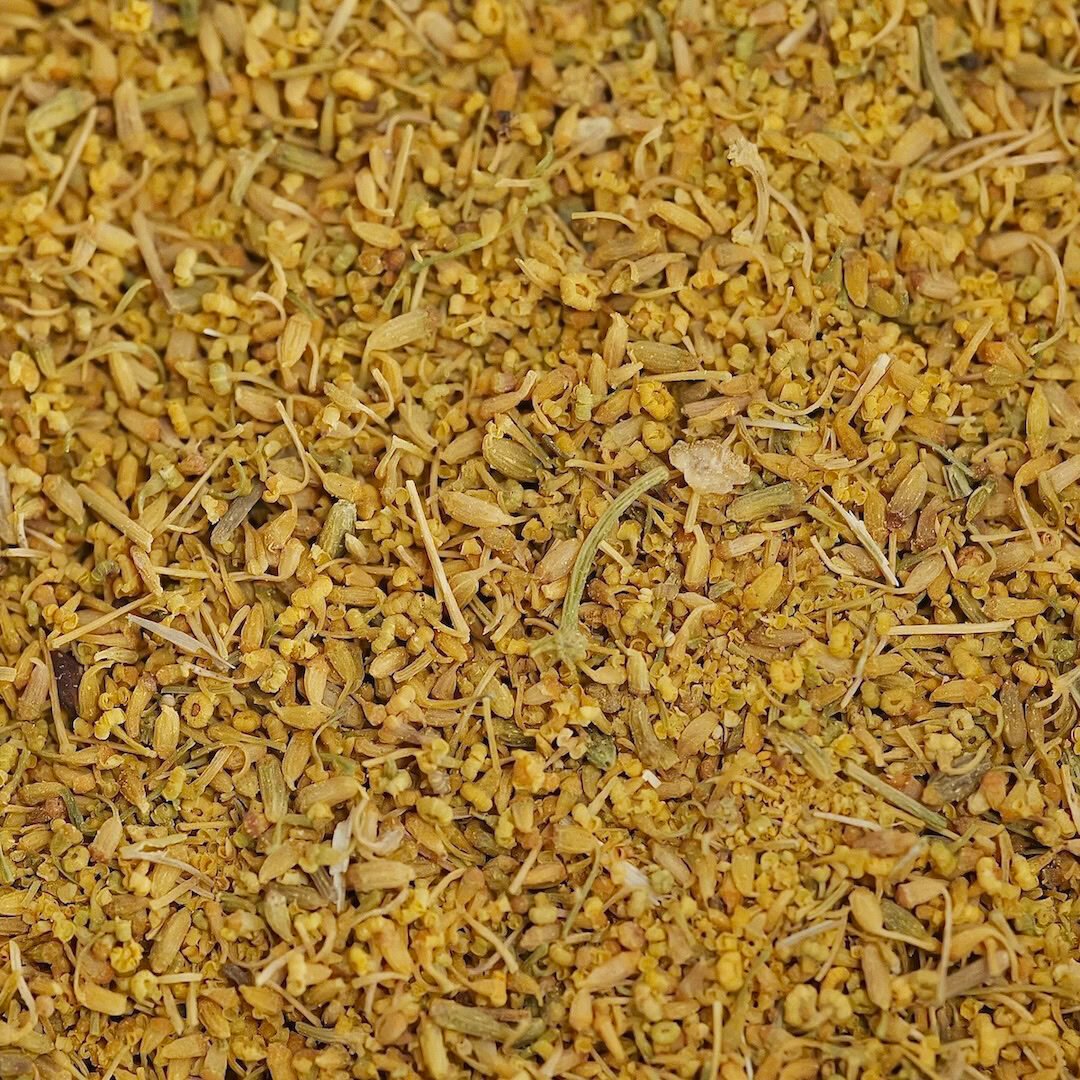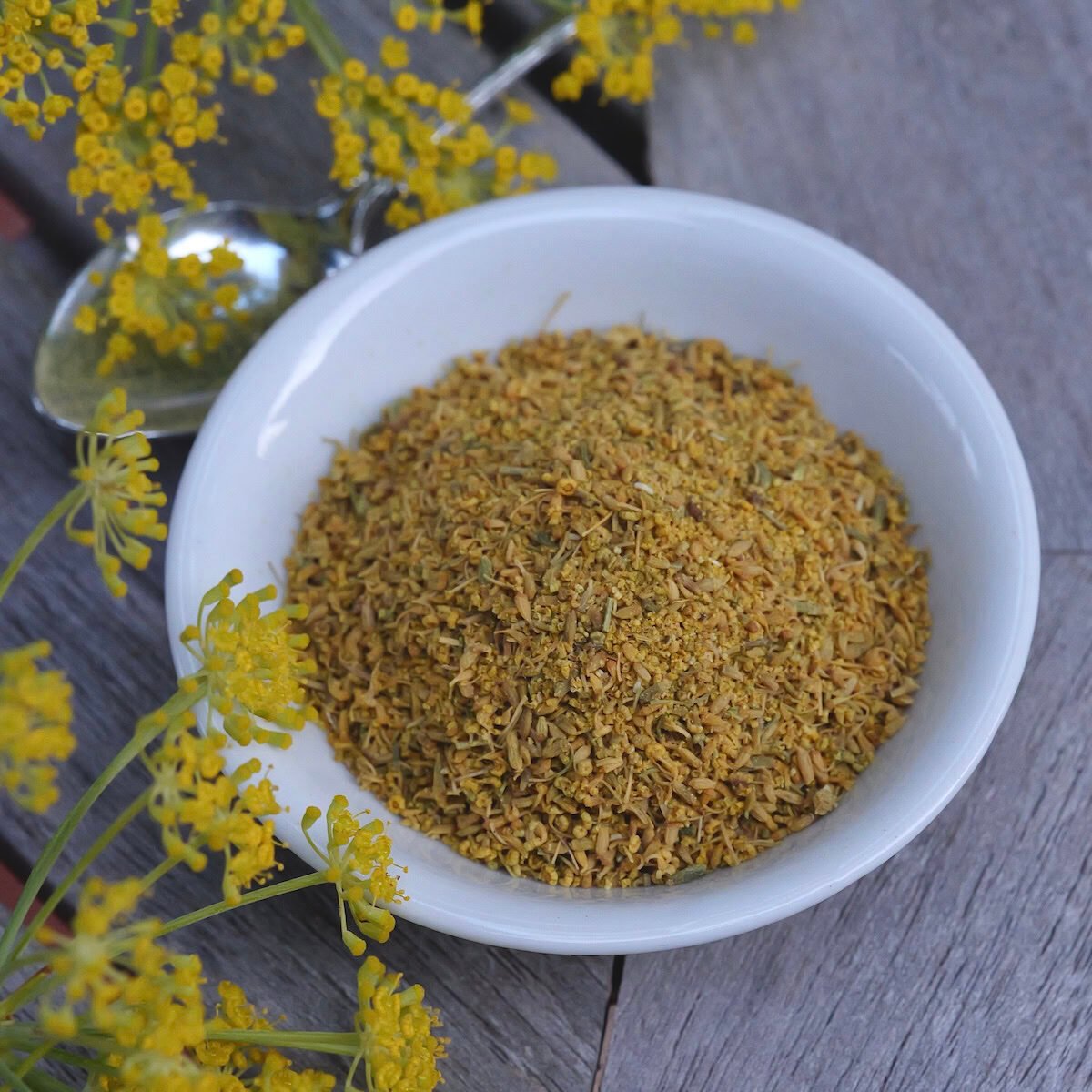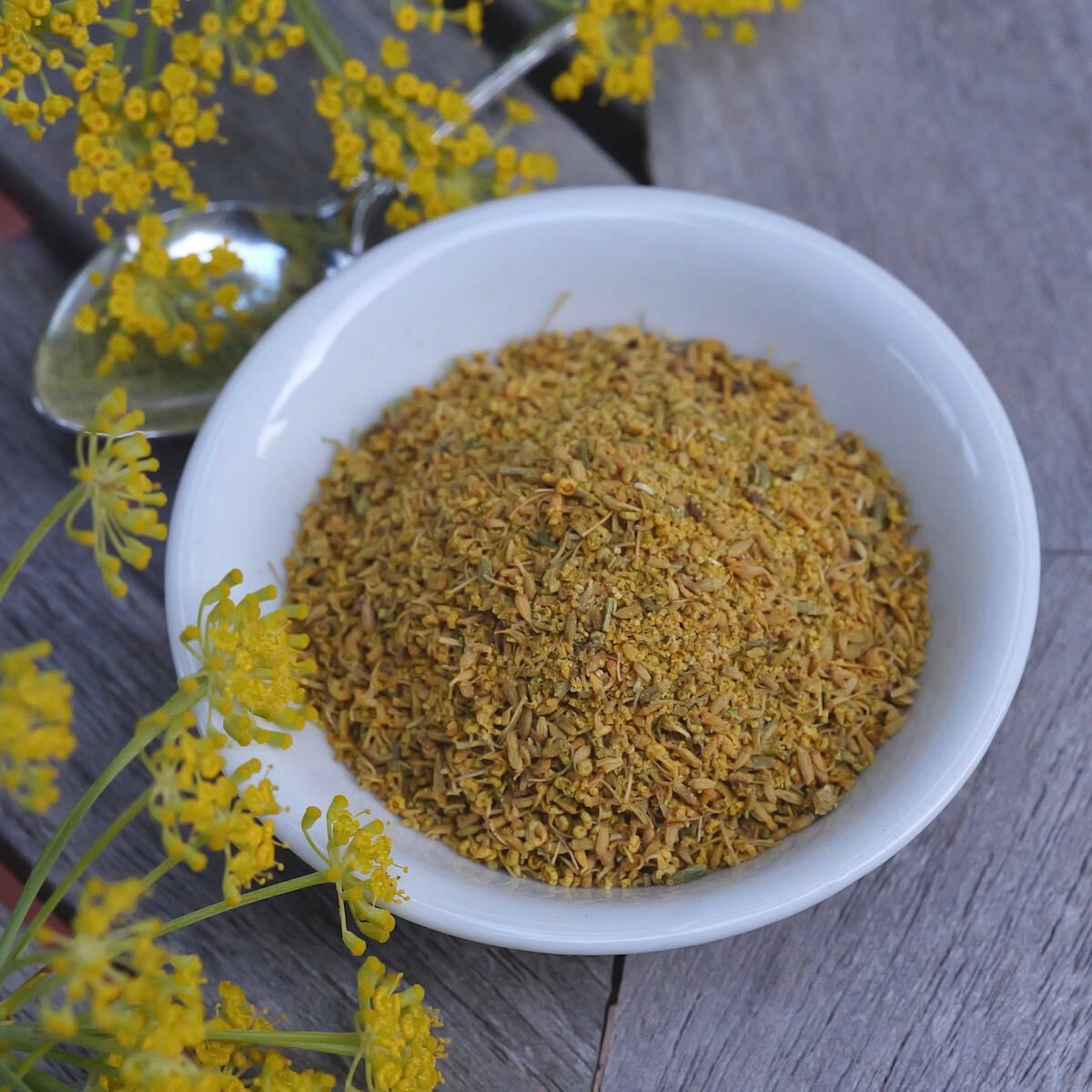Fennel Pollen
Fennel pollen is the spice produced from the blossoms and attached pollen of the fennel plant (Foeniculum vulgare), a perennial flowering herb in the parsley family.

REGION OF ORIGIN
The fennel plant evolved on the shores of the Mediterranean, but fennel pollen as a distinct spice originated in Tuscany, Italy, where its harvesting and use began centuries ago.
PART & COLOR
Since the final product includes both fine pollen and tiny fragments of dried fennel blossoms, the spice has a slightly coarse texture and ranges in color from bright yellow to muted golden hues, depending on the variety and maturity of the flowers at harvest.
HARVEST
Fennel is a fast-growing perennial that flowers in the second year and can produce flowers and pollen multiple times over several years. It is planted in the spring and the pollen is harvested in the late summer when the flowers are in full bloom, right before they start to seed. The flowers are meticulously collected by hand, then sifted with a fine mesh sieve. The pollen is then gently dried to preserve its color and flavor. Thousands of flowers are needed to make a usable quantity, which is why it's one of the most expensive spices.

FLAVOR & AROMA PROFILE
Fennel pollen imparts a bright, citrusy, warm, buttery, floral, and anise flavor with a heady aroma that blends sweet, herbal, and honey notes. Fennel pollen explodes on the palate, delivering an intense burst of sweetness that gives way to a distinct warmth. Honey and citrus notes sit on the tongue for a while, inviting another bite. The flavor profile is even stronger than in fennel seed, yet almost paradoxically is also more delicate. Compounds like anethole, fenchone, and estragole are abundant, not only contributing to its sensory appeal but also aiding digestion and reducing inflammation.
Its rarity and labor-intensive harvesting process make fennel pollen a luxurious and sought-after ingredient, but its ability to elevate any dish is well worth the investment.
CULINARY USES
The magic of fennel pollen has earned it some rather distinguished monikers. It's called the "spice of angels'' and "culinary fairy dust" due to its amazing ability to amplify any flavor of any dish, sweet or savory. Its best as a finishing spice, where only a light dusting on a ready-to-serve plate can make a good dish outstanding.
This spice is cherished as an addition to grilled fish, pork, roasted vegetables, and even desserts like panna cotta, ice cream, apple pie, and citrus tarts. It pairs beautifully with cheese dishes like burrata and crostini, but you can add it to fruit salads as well, particularly those featuring stone fruits like peaches and plums. With its transformative effects and golden appearance, it lives up to its poetic nicknames.


